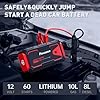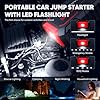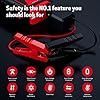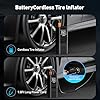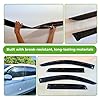Table of Contents
Understanding how to turn off power steering is a technical question that arises in various automotive scenarios, from emergency situations to performance modifications. Whether you’re dealing with a power steering system failure, preparing a vehicle for racing, or simply curious about vehicle mechanics, this comprehensive guide covers all aspects of disabling power steering systems. Modern vehicles use either hydraulic power steering (HPS) or electric power steering (EPS) systems, each requiring different approaches for safe deactivation. Attempting to disable these systems without proper knowledge can lead to dangerous driving conditions, damage to steering components, or complete steering failure. This article will explore everything from temporary disablement procedures to permanent conversions, while emphasizing the critical safety and legal implications of modifying your vehicle’s steering system. Remember that power steering is a vital safety system, and any modification should be approached with extreme caution and professional guidance.
Understanding Power Steering Systems
Before attempting to disable power steering, it’s crucial to understand the two primary types of systems found in modern vehicles and how they operate. The method for disabling power steering varies significantly depending on whether your vehicle uses hydraulic or electric assistance.
Hydraulic Power Steering (HPS) Systems
Traditional hydraulic power steering systems use fluid pressure to reduce steering effort. These systems consist of several key components:
- Power Steering Pump: Driven by the engine via a serpentine belt, this pump circulates hydraulic fluid under pressure throughout the system.
- Steering Gear/Rack: Contains a hydraulic piston that assists with steering movement when pressurized fluid is introduced.
- Fluid Reservoir: Stores the power steering fluid and helps maintain proper fluid levels.
- Hoses and Lines: Transport fluid between the pump, gear, and reservoir under high pressure.
- Hydraulic Fluid: Specialized fluid that transmits power and lubricates system components.
In HPS systems, the pump runs continuously while the engine is operating, creating constant hydraulic pressure that’s available immediately when the steering wheel is turned. This design provides smooth, responsive steering assistance but creates parasitic engine power loss that slightly reduces fuel efficiency .
Electric Power Steering (EPS) Systems
Modern vehicles increasingly use electric power steering systems, which replace hydraulic components with electronic controls and motors:
- Electric Motor: Provides steering assistance directly to the steering column, intermediate shaft, or steering gear.
- Electronic Control Unit (ECU): Processes sensor inputs and determines how much assistance to provide.
- Torque Sensor: Measures the force the driver applies to the steering wheel.
- Vehicle Speed Sensor: Allows the system to vary assistance based on driving speed.
Unlike hydraulic systems, EPS only consumes energy when steering assistance is actually needed, making it more energy-efficient . The system can provide maximum assistance during low-speed maneuvers like parking while reducing assistance at highway speeds for better road feedback and stability.
Table: Comparison of Hydraulic vs. Electric Power Steering Systems
| Characteristic | Hydraulic Power Steering (HPS) | Electric Power Steering (EPS) |
|---|---|---|
| Power Source | Engine-driven pump | Electric motor |
| Energy Efficiency | Lower (continuous operation) | Higher (on-demand operation) |
| Steering Feel | Fluid-damped, smooth | Can be programmed for various feels |
| Disable Methods | Belt removal, looped line | Fuse removal, ECU programming |
| Maintenance | Regular fluid changes, belt replacement | Minimal maintenance required |
Reasons for Disabling Power Steering
While power steering is a standard safety and convenience feature in modern vehicles, several legitimate scenarios might lead someone to consider disabling it:
Emergency Situations
In rare cases, you may need to temporarily disable power steering due to system failure while driving. A sudden loss of power steering assistance due to belt failure, pump seizure, or major fluid leak can make steering unexpectedly difficult. Some modern vehicles like the Honda CR-V Hybrid include specific emergency procedures to turn off the power system while driving, which also disables power steering assistance .
Performance and Track Applications
Some driving enthusiasts and competitive racers prefer unassisted steering for:
- Improved Steering Feedback: Without power assistance, drivers may receive more direct feedback from the road surface and tire contact patches.
- Reduced Weight: Removing hydraulic components or electric motors can slightly reduce vehicle weight.
- Engine Power Preservation: Eliminating the hydraulic pump reduces parasitic drag on the engine, freeing up minimal horsepower.
System Malfunctions and Repairs
During certain repair scenarios, temporary disablement may be necessary:
- Pump Failure: Continuing to drive with a seized pump can damage the drive belt and related components.
- Major Leaks: Significant fluid loss necessitates system disablement to prevent further damage until repairs can be made.
- Diagnostic Procedures: Mechanics may temporarily disable power steering during diagnostic testing of other vehicle systems.
Fuel Efficiency Concerns
Some owners of older hydraulic power steering vehicles explore disablement to improve fuel economy, though the actual gains are typically minimal—usually less than 1-2% in real-world driving conditions .
How to Turn Off Power Steering in Emergency Situations
Sometimes you may need to quickly disable power steering due to system failure while driving. The approach varies depending on your vehicle’s specific system.
Emergency Power System Shutdown
Some modern vehicles, particularly hybrids, have specific procedures for emergency power system shutdown. For example, the 2025 Honda CR-V Hybrid allows drivers to turn off the power system while driving by either:
- Pressing and holding the POWER button for about two seconds
- Firmly pressing the POWER button three times
This procedure disables power assist to both steering and braking systems, requiring “significantly more physical effort and time to steer and slow the vehicle” . The manufacturer emphasizes this should only be done when “absolutely necessary” and drivers should “use both feet on the brake pedal to slow down the vehicle and stop immediately in a safe place” .
Dealing with Sudden Power Steering Failure
If your power steering fails unexpectedly while driving (indicated by sudden heavy steering and possibly warning lights):
- Don’t Panic: Grip the steering wheel firmly with both hands.
- Apply Increased Steering Force: Expect significantly heavier steering, especially at lower speeds.
- Brake Carefully: Reduce speed gradually while maintaining steering control.
- Pull Over Safely: Navigate to a safe location away from traffic.
- Assess the Situation: Check for obvious issues like a broken serpentine belt or fluid leaks.
- Seek Assistance: Unless you’re trained in automotive repair, contact a professional for help.
Temporary Methods to Disable Power Steering
For short-term power steering disablement, several temporary methods can be employed depending on your system type:
Removing the Power Steering Fuse (Electric Systems)
For vehicles with Electric Power Steering (EPS), locating and removing the specific fuse is often the simplest temporary disablement method:
- Consult Your Owner’s Manual: Identify the exact fuse responsible for the power steering system.
- Locate the Fuse Box: Most vehicles have interior fuse panels, often located under the dashboard or in the glove box.
- Identify the Correct Fuse: Use the fuse diagram to find the specific power steering fuse.
- Remove the Fuse: Use fuse pullers or needle-nose pliers to carefully extract the fuse.
- Test the System: Start the vehicle (if safe) to confirm power steering is disabled.
Note that this method may trigger warning lights on your dashboard, and some modern vehicles may have safeguard systems that prevent normal operation with this fuse removed.
Belt Removal (Hydraulic Systems)
For hydraulic power steering systems, the most straightforward temporary disablement method is removing the drive belt:
- Safety First: Ensure the vehicle is parked on a level surface with the parking brake engaged.
- Locate the Power Steering Pump: Identify the pump and its associated drive belt.
- Relieve Belt Tension: Use the appropriate tool to relieve tension on the belt tensioner.
- Remove the Belt: Slip the belt off the power steering pump pulley.
- Secure Loose Ends: Ensure the removed belt cannot interfere with other engine components.
This method stops the pump from operating but leaves the hydraulic system otherwise intact. Be aware that on some engines, the power steering belt may also drive other components that will be disabled by this procedure.
Permanent Methods to Disable Power Steering
For those committed to permanent power steering removal, such as in dedicated race vehicles or custom projects, more comprehensive approaches are required:
Looping the Hydraulic Lines (Hydraulic Systems)
Simply disconnecting hydraulic lines on HPS systems is insufficient and will introduce air and contaminants. Instead, the system must be properly looped:
- Complete Fluid Drainage: Properly drain and dispose of all power steering fluid from the system.
- Remove Existing Lines: Disconnect all hydraulic lines from the steering rack and pump.
- Create a Loop Line: Install a custom loop line between the pressure and return ports on the steering rack.
- Seal Open Ports: Cap or plug all remaining open ports to prevent contamination.
- Remove Unnecessary Components: Extract the pump, reservoir, and associated mounting hardware.
This method allows the internal components of the steering rack to remain lubricated while eliminating hydraulic assistance. Without proper lubrication, the rack will quickly wear and potentially seize.
Manual Steering Rack Conversion
The most professional approach for permanent power steering removal is installing a manual steering rack:
- Source Compatible Components: Locate a manual steering rack designed for your vehicle or similar model.
- Remove Power Steering Components: Completely remove all power steering system parts.
- Install Manual Rack: Fit the manual steering rack using appropriate mounting hardware.
- Connect Steering Linkage: Attach the intermediate shaft and tie rods properly.
- Align the Steering System: Perform a professional wheel alignment to ensure proper handling.
This approach provides the most natural steering feel but requires significant modification and expertise. As noted in automotive forums, “Installing a manual steering setup (with appropriate gear ratio) is worlds away from merely removing/bypassing the pump on a car with a power steering gearbox” .
Modifying Electric Power Steering Systems
Permanently disabling EPS typically requires more advanced approaches:
- ECU Reprogramming: Using specialized software to disable power steering assistance at the control module level.
- Motor Disconnection: Physically disconnecting the assist motor while maintaining standard mechanical steering function.
- Custom Controller Installation: Adding aftermarket controllers that can modify or eliminate power assistance.
These modifications often require advanced automotive electronics knowledge and specialized equipment.
Critical Safety Considerations and Potential Risks
Disabling power steering introduces significant safety concerns that must be carefully considered:
Drastically Increased Steering Effort
The most immediate effect of power steering disablement is dramatically heavier steering, particularly at low speeds:
- Parking Maneuvers: Steering effort during parking can increase by 300-500%, making some maneuvers extremely difficult.
- Low-Speed Turning: Slow-speed turns require substantially more physical strength.
- Emergency Maneuvers: Sudden avoidance maneuvers become more challenging and physically demanding.
As noted in automotive forums, “The steering ratio in modern vehicles is wrong for being unpowered, and the remaining unpowered power steering components will add to the sheer strength needed to pilot the vehicle” .
Compromised Vehicle Control
Eliminating power steering assistance can negatively impact vehicle control in several ways:
- Reduced Maneuverability: The increased effort required may slow steering response in critical situations.
- Driver Fatigue: Continuous heavy steering can lead to arm and shoulder fatigue during normal driving.
- Inconsistent Feel: Modified systems often provide inconsistent feedback compared to properly designed manual steering.
Potential Damage to Steering Components
Improper disablement methods can cause serious damage:
- Hydraulic System Damage: Running an HPS system without fluid or with looped lines can cause internal damage to the steering rack.
- Increased Wear: Additional steering force accelerates wear on steering components like universal joints and intermediate shafts.
- Belt System Issues: Removing only the power steering belt on some engines may affect other belt-driven components.
Legal and Insurance Implications
Modifying your steering system may have legal and financial consequences:
- Regulatory Compliance: Some jurisdictions prohibit significant modifications to safety-critical systems like steering.
- Insurance Coverage: Insurers may deny claims if they determine steering modifications contributed to an accident.
- Liability Exposure: You could face increased liability if modified steering is involved in an accident causing injury or property damage.
- Vehicle Resale Value: Permanently disabled power steering significantly reduces your vehicle’s marketability and value.
Professional Alternatives to Disabling Power Steering
Instead of completely disabling power steering, consider these professional alternatives that address common concerns while maintaining safety:
Power Steering System Service and Repair
Often, complaints about power steering can be resolved through proper maintenance:
- Fluid Flush and Bleed: Hydraulic systems require periodic fluid changes to maintain performance. Bleeding removes air bubbles that can cause noise and inconsistent operation .
- Component Replacement: Worn pumps, leaking hoses, or faulty electric motors can often be replaced with new or rebuilt units.
- Professional Diagnosis: Strange noises or poor performance may indicate specific repairable issues rather than system failure.
Performance-Oriented Power Steering Upgrades
For enthusiasts seeking better steering feel:
- Quick-Ratio Steering Racks: Install steering racks with quicker ratios for more responsive handling while maintaining power assistance.
- Adjustable EPS Controllers: Aftermarket controllers for electric power steering systems allow tuning assistance levels for different driving conditions.
- Sport-Mode Programming: Some vehicles offer sport steering modes that reduce assistance for better road feedback.
Proper Manual Steering Conversion
If manual steering is genuinely preferred:
- Professional Installation: Have a qualified shop perform a complete manual steering conversion using proper components.
- Vehicle Selection: Consider purchasing a vehicle originally equipped with manual steering for authentic feel and proper engineering.
- Dedicated Track Car: Reserve steering modifications for vehicles used exclusively for competition, not daily transportation.
Conclusion
Understanding how to turn off power steering involves much more than simply disconnecting components—it requires careful consideration of your specific vehicle system, intended purpose, and safety implications. While temporary disablement may be necessary in emergencies, and permanent removal might suit specialized applications like dedicated race cars, these modifications significantly impact vehicle safety, handling, and legality. For daily-driven vehicles, maintaining a properly functioning power steering system is almost always the safest approach. If you’re experiencing issues with your power steering, consult with a qualified automotive technician who can diagnose problems and recommend appropriate repairs or upgrades. Remember that your vehicle’s steering system is a critical safety component, and any modifications should prioritize maintaining control and predictability in all driving conditions.
Key Takeaways
- Power steering can be temporarily disabled in emergencies, but this requires significantly more physical effort to steer and should only be done when absolutely necessary .
- Modern vehicles use either hydraulic (HPS) or electric (EPS) power steering systems, each requiring different disablement approaches.
- Simply bypassing or removing components from a system designed for power assistance results in heavy, unsatisfactory steering unlike vehicles designed with manual steering .
- Modifying your power steering system may have legal implications and could void insurance coverage in case of accidents.
- For most drivers, repairing or upgrading the existing power steering system is safer and more practical than complete disablement.
Sources
- Mobil: How to flush and bleed power steering systems
- Element Owners Club: Disconnecting/Disabling power steering?
- Nissan112: How to Turn Off Driver Assistance Features on a Nissan
- PSS1: Filling and Bleeding
- Honda: Emergency Power System Off | CR-V Hybrid 2025
- Castrol: How To Bleed Power Steering
- North Park Toyota: Toyota Steering Assist | How to Turn Off & On
- My Focus Electric: Disable Power Steering

























